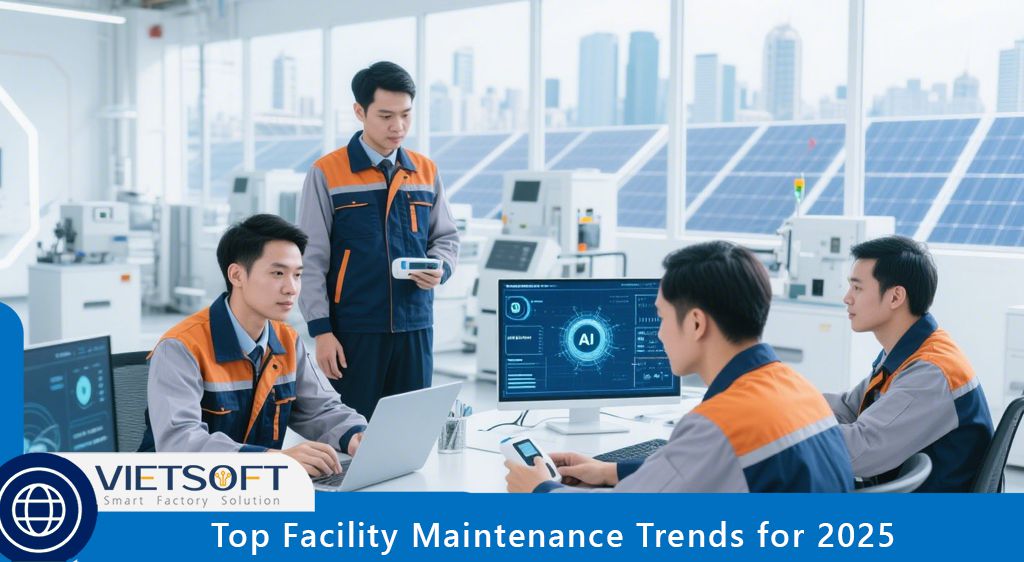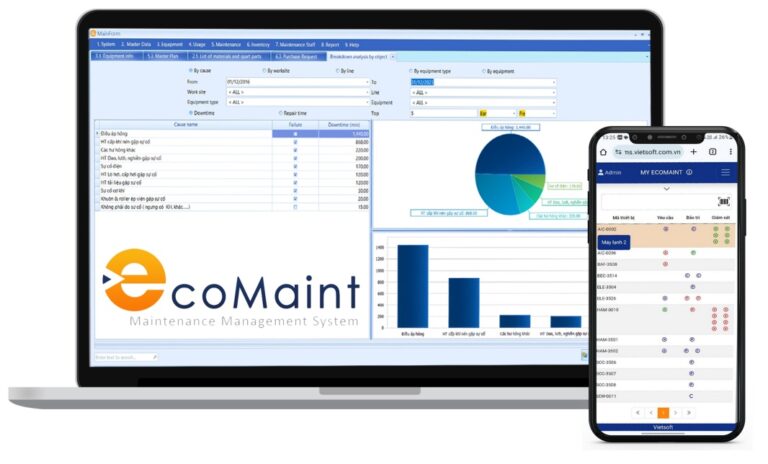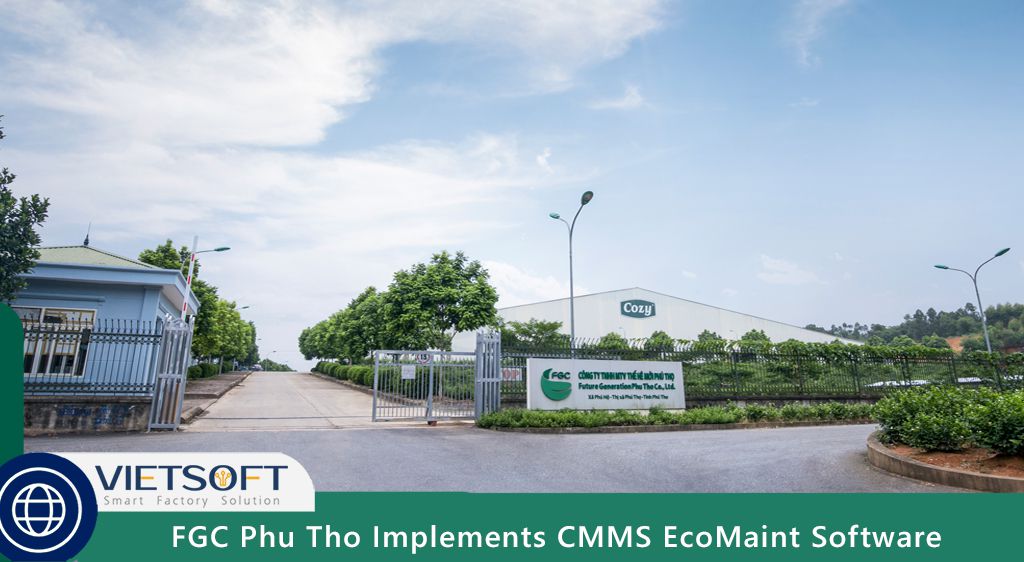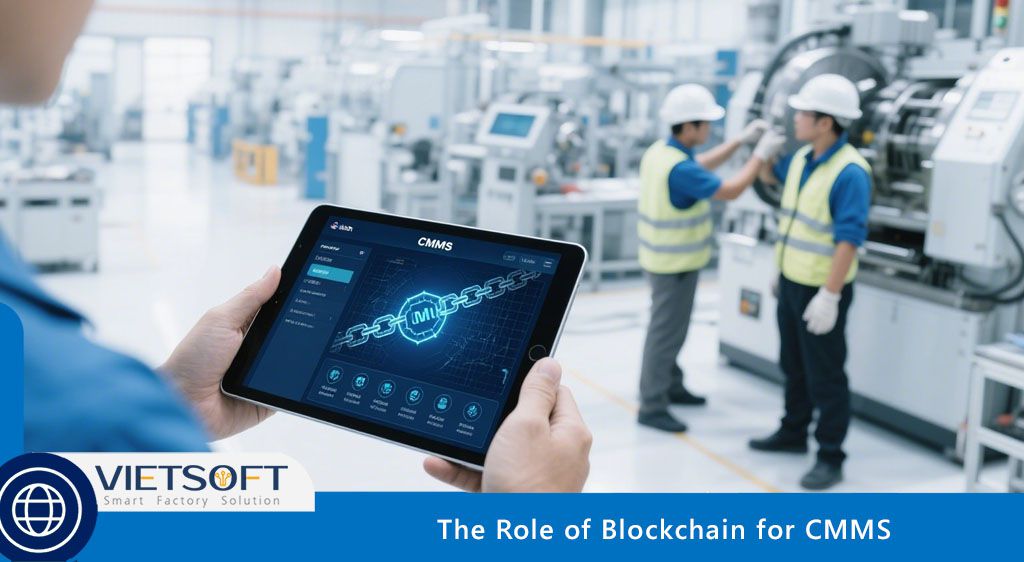
Facility maintenance has transformed into a strategic pillar, integrating advanced technologies, sustainability imperatives, and workforce development to drive organizational success. This article provides a comprehensive, academically rigorous analysis of the Facility Maintenance Trends for 2025, tailored for facility managers, maintenance professionals, and business leaders.
I. The Strategic Importance of Facility Maintenance in 2025
Facility management has evolved from reactive repairs to a proactive, data-driven discipline that enhances operational efficiency, sustainability, and resilience. The Facility Maintenance Trends for 2025 reflect the integration of digital transformation, environmental responsibility, and human-centric strategies. These trends enable organizations to reduce costs, extend asset longevity, and comply with stringent regulatory and ESG (Environmental, Social, and Governance) requirements, which involve environmental sustainability, social responsibility, and transparent governance. Below, we explore the top trends, providing detailed explanations of their roles, functionalities, applications, benefits, and key concepts, structured for clarity and academic rigor.
II. Smart Technology and IoT Integration
1. Role and Importance
Smart technology, powered by the Internet of Things (IoT), is revolutionizing facility maintenance by enabling real-time monitoring and data-driven decision-making. IoT refers to a network of interconnected devices and sensors that collect and exchange data over the internet, allowing facilities to monitor and control systems remotely. With 70% of facility managers globally prioritizing digital transformation, IoT is a cornerstone of modern facility management, optimizing maintenance processes and energy efficiency.
2. Key Features
- Real-Time Data Collection: IoT sensors monitor parameters like energy consumption, equipment vibration, and indoor air quality, providing continuous insights. For example, sensors in HVAC systems track temperature and airflow to ensure optimal performance.
- Automated System Adjustments: Smart systems, such as Heating, Ventilation, and Air Conditioning (HVAC) or lighting, self-regulate based on real-time data, like occupancy or environmental conditions, reducing manual intervention.
- Predictive Maintenance Integration: IoT feeds data into analytics platforms to anticipate equipment failures, minimizing downtime by addressing issues before they escalate.
- Interconnected Networks: Devices communicate wirelessly, enabling centralized control and automated maintenance workflows, such as generating work orders when anomalies are detected.
3. Applications
- Commercial Buildings: IoT sensors optimize energy use by adjusting lighting and HVAC based on occupancy, reducing waste in office spaces.
- Data Centers: Monitor cooling systems to ensure uptime, critical for high-energy facilities where overheating can cause costly disruptions.
- Industrial Facilities: Track machinery performance to prevent production line interruptions, such as motor failures in manufacturing plants.
- Healthcare: Ensure consistent operation of critical systems like medical imaging equipment through real-time monitoring, maintaining patient care continuity.
4. Benefits
- Cost Efficiency: Smart HVAC systems and automated lighting can save up to 20% in maintenance costs by optimizing energy use.
- Operational Transparency: Real-time data provides visibility into facility performance, enabling proactive management and informed decision-making.
- Enhanced Occupant Comfort: IoT-driven adjustments improve air quality and temperature control, boosting workplace satisfaction for employees and visitors.
- Reduced Downtime: Predictive maintenance, enabled by IoT, minimizes unplanned outages, enhancing operational continuity.
III. Predictive Maintenance with AI and Analytics
1. Role and Importance
Predictive maintenance, powered by Artificial Intelligence (AI) and analytics, shifts facility management from reactive to proactive strategies. AI refers to computer systems that perform tasks requiring human intelligence, such as data analysis and pattern recognition, enabling machines to learn from data and make predictions. With 65% of organizations regularly using generative AI in at least one business function, this trend leverages data to forecast equipment failures, optimizing maintenance schedules and reducing costs.
2. Key Features
- Data-Driven Forecasting: AI analyzes historical and real-time data to identify patterns indicative of potential failures, such as unusual vibration in machinery.
- Automated Alerts and Work Orders: Anomalies trigger notifications and maintenance tasks without manual intervention, streamlining response times.
- Customized Maintenance Schedules: AI tailors maintenance plans based on equipment usage, environmental conditions, and historical performance, ensuring efficiency.
- Integration with IoT: Combines sensor data with AI models for precise predictions and real-time monitoring, enhancing accuracy.
3. Applications
- Manufacturing: Anticipate motor or conveyor belt failures to maintain production continuity, preventing costly downtime.
- Retail: Monitor refrigeration systems to prevent spoilage and ensure compliance with health standards, protecting inventory.
- Healthcare: Predict maintenance needs for critical equipment like ventilators or diagnostic machines, ensuring uninterrupted patient care.
- Hospitality: Ensure HVAC systems operate efficiently to maintain guest comfort in hotels and resorts.
4. Benefits
- Cost Reduction: Predictive maintenance reduces repair costs by 12–18% compared to reactive approaches, minimizing emergency repairs.
- Extended Asset Life: Proactive interventions prevent excessive wear, prolonging equipment lifespan.
- Minimized Disruptions: Scheduling maintenance during low-impact periods reduces operational downtime, maintaining productivity.
- Improved Safety: Early detection of issues prevents hazardous failures, protecting workers and occupants.
IV. Sustainability and ESG Compliance
1. Role and Importance
Sustainability and ESG compliance are central to facility management in 2025, driven by stricter environmental regulations and consumer demand for responsible practices. ESG stands for Environmental, Social, and Governance, encompassing efforts to reduce environmental impact, ensure safe and ethical workplaces, and maintain transparent governance. Eco-friendly cleaning solutions are set to dominate the market, reflecting a broader commitment to reducing environmental impact and aligning with global net-zero goals.
2. Key Features
- Energy Conservation: Adoption of renewable energy sources (e.g., solar panels), LED lighting, and optimized HVAC systems to reduce consumption.
- Waste Management: Implementation of recycling programs and paperless operations to minimize waste, such as digital work orders.
- Social Responsibility: Ensuring safe workplaces and ethical supplier practices, like fair labor standards, to meet social ESG criteria.
- Governance Transparency: Using data-driven reporting to ensure compliance with regulatory standards, such as emissions reporting.
3. Applications
- Corporate Offices: Install solar panels and smart thermostats to reduce energy use in office buildings.
- Industrial Facilities: Use biodegradable cleaning products and low-volatile organic compound (VOC) paints to minimize environmental impact.
- Data Centers: Optimize cooling systems to lower energy consumption, critical for high-energy facilities.
- Healthcare: Implement water conservation strategies to meet sustainability targets, such as efficient water treatment systems.
4. Benefits
- Cost Savings: Energy-efficient upgrades, such as WaterSense-labeled faucets, can reduce water flow by at least 30%.
- Regulatory Compliance: Adherence to ESG standards avoids fines and penalties, ensuring legal compliance.
- Enhanced Reputation: Demonstrates commitment to sustainability, appealing to eco-conscious stakeholders like customers and investors.
- Operational Efficiency: Sustainable practices streamline resource use, reducing waste and costs.
V. Digital Twins for Operational Optimization
1. Role and Importance
Digital twins—virtual replicas of physical assets or systems—enable facility managers to simulate and optimize operations without risking real-world disruptions. A digital twin is a dynamic, digital model that mirrors the real-time performance and condition of physical assets, such as equipment or entire buildings, using data from sensors. This technology is becoming more accessible and is pivotal for strategic planning and efficiency.
2. Key Features
- Real-Time Simulation: Mirrors asset performance using live data from IoT sensors, reflecting current conditions.
- Scenario Analysis: Tests maintenance strategies or system upgrades virtually to assess outcomes, such as energy efficiency improvements.
- Predictive Insights: Forecasts long-term asset performance and maintenance needs based on simulated data.
- Integration with CMMS: Links digital twins with maintenance logs for comprehensive asset management, ensuring data continuity.
3. Applications
- HVAC Systems: Simulate airflow adjustments to optimize energy efficiency in commercial buildings.
- Production Lines: Test equipment upgrades to evaluate performance improvements in manufacturing facilities.
- Building Management: Optimize space utilization based on occupancy patterns in office complexes.
- Water Systems: Model chemical dosing adjustments to prevent corrosion or scaling in cooling towers.
4. Benefits
- Risk Mitigation: Virtual testing reduces the likelihood of costly real-world errors, such as system failures during upgrades.
- Efficiency Gains: Optimizes systems for better performance, potentially reducing energy use.
- Cost Efficiency: Reduces trial-and-error expenses, saving on maintenance budgets.
- Strategic Planning: Enables data-driven decisions for long-term capital investments, like equipment replacements.
VI. Automation and Integrated Facility Management (IFM)
1. Role and Importance
Integrated Facility Management (IFM) consolidates maintenance, security, and energy management into a unified platform, enhanced by automation. IFM refers to a holistic approach that integrates all facility-related services into a single system, streamlining operations and reducing inefficiencies. Automation improves productivity by reducing manual intervention, making it a cornerstone of facility management in 2025.
2. Key Features
- Centralized Platforms: Aggregates data from maintenance, security, and energy systems for streamlined management, accessible via a single dashboard.
- Automated Workflows: Schedules repairs, tracks performance, and generates compliance reports automatically, reducing manual tasks.
- Scalable Integration: Adapts to facilities of varying sizes, from single offices to multi-site operations.
- Real-Time Analytics: Provides instant insights into system performance and maintenance needs, enabling quick decisions.
3. Applications
- Commercial Complexes: Manage cleaning, security, and maintenance from a single dashboard in office buildings.
- Hospitals: Coordinate equipment maintenance and infection control protocols seamlessly to ensure patient safety.
- Retail Chains: Standardize maintenance processes across multiple locations, ensuring consistency.
- Educational Institutions: Streamline facility operations to support flexible learning environments, like hybrid classrooms.
4. Benefits
- Time Savings: Automation reduces administrative tasks, improving efficiency.
- Improved Coordination: Eliminates silos between departments, enhancing operational coherence.
- Compliance Readiness: Generates audit-ready reports for regulatory adherence, simplifying audits.
- Cost Efficiency: Optimizes resource allocation, reducing operational expenses.
VII. Cyber-Physical Security Integration
1. Role and Importance
The convergence of cybersecurity and physical security is critical as facilities become increasingly connected. Cybersecurity protects digital systems from unauthorized access, while physical security safeguards tangible assets like buildings and equipment. With 27% of building managers reporting cyberattacks on operational technology (OT) systems, this trend addresses vulnerabilities in smart systems, ensuring robust protection.
2. Key Features
- Encrypted Systems: Secures IoT devices, access controls, and surveillance systems against unauthorized access, using encryption protocols.
- AI-Powered Threat Detection: Monitors for cyber and physical threats in real time, identifying anomalies like hacking attempts or unauthorized entry.
- Cross-Functional Collaboration: Aligns IT and facility teams for comprehensive security, ensuring cohesive strategies.
- Data Protection: Ensures compliance with regulations like GDPR through secure data handling, protecting sensitive information.
3. Applications
- Smart Buildings: Protects connected HVAC and lighting systems from cyber intrusions that could disrupt operations.
- Industrial Facilities: Secures inventory tracking and access control systems to prevent theft or sabotage.
- Healthcare: Safeguards patient data and critical medical equipment from cyber-physical threats.
- Data Centers: Prevents breaches that could disrupt operations or compromise sensitive data.
4. Benefits
- Risk Mitigation: Reduces the likelihood of costly cyber-physical breaches, protecting assets and data.
- Regulatory Compliance: Meets stringent data protection and safety standards, avoiding penalties.
- Operational Continuity: Ensures uninterrupted facility operations, maintaining productivity.
- Stakeholder Trust: Enhances confidence in facility security measures among employees and clients.
VIII. Augmented Reality (AR) and Virtual Reality (VR) for Training
1. Role and Importance
Augmented Reality (AR) and Virtual Reality (VR) transform technician training by offering immersive, hands-on simulations, reducing errors and enhancing skill development. AR overlays digital information onto the physical world, such as repair instructions on equipment, while VR creates fully immersive virtual environments for training. This trend prepares workforces for complex technologies, aligning with evolving facility management needs.
2. Key Features
- Immersive Simulations: Provides virtual environments for practicing complex repairs, such as machinery maintenance, without real-world risks.
- Real-Time AR Guidance: Overlays step-by-step instructions on equipment via smart glasses, guiding technicians during repairs.
- Remote Expert Support: Enables real-time collaboration with off-site specialists, who can guide technicians via AR/VR interfaces.
- Integration with CMMS: Links training data to maintenance logs for performance tracking, ensuring alignment with operational needs.
3. Applications
- Manufacturing: Trains technicians on intricate machinery maintenance, like robotic assembly lines.
- Healthcare: Simulates repairs on critical medical equipment, such as MRI machines.
- Construction: Prepares workers for high-risk maintenance tasks, like structural inspections.
- Data Centers: Enhances skills for managing complex cooling systems, ensuring uptime.
4. Benefits
- Accelerated Learning: Reduces training time by enabling hands-on practice without real-world risks.
- Error Reduction: Improves repair accuracy through guided practice, minimizing costly mistakes.
- Cost Efficiency: Eliminates the need for physical training setups or travel, reducing expenses.
- Workforce Readiness: Prepares technicians for advanced technologies and compliance requirements, ensuring operational readiness.
IX. Blockchain for Transparent Asset Management
1. Role and Importance
Blockchain provides a transparent, tamper-proof ledger for maintenance logs and supply chain management, enhancing trust and accountability. Blockchain is a decentralized digital ledger that records transactions across multiple computers, ensuring data integrity and transparency. This technology streamlines audits and ensures data accuracy, making it vital for facility management.
2. Key Features
- Immutable Records: Time-stamps maintenance actions for verifiable records, preventing tampering.
- Supply Chain Transparency: Tracks parts and supplier authenticity to prevent fraud, ensuring quality.
- Audit Efficiency: Simplifies compliance with regulatory and ESG requirements through transparent data.
- CMMS Integration: Links blockchain data with maintenance management systems for seamless tracking.
3. Applications
- Industrial Plants: Tracks equipment maintenance histories for compliance with regulatory standards.
- Logistics: Verifies spare parts authenticity to ensure quality and prevent counterfeit usage.
- Healthcare: Ensures regulatory compliance for medical equipment maintenance, like sterilization records.
- Commercial Facilities: Manages asset inventories across multiple sites, ensuring consistency.
4. Benefits
- Enhanced Trust: Eliminates disputes over maintenance or supply records, fostering stakeholder confidence.
- Cost Savings: Reduces losses from fraudulent or substandard supplies, lowering procurement costs.
- Compliance Efficiency: Streamlines audit processes with transparent, verifiable data.
- Operational Accuracy: Ensures precise tracking of asset performance and maintenance activities.
X. Robotic and Drone-Assisted Inspections
1. Role and Importance
Robots and drones enhance inspection safety and efficiency by accessing hazardous or hard-to-reach areas. Robots are automated machines that perform tasks like inspections, while drones are unmanned aerial vehicles equipped with cameras or sensors for remote monitoring. This trend improves data accuracy and reduces risks, aligning with safety and efficiency goals.
2. Key Features
- Automated Inspections: Drones capture high-resolution images of infrastructure, such as roofs or towers, for detailed analysis.
- Hazardous Area Access: Robots inspect confined spaces or high-risk areas without human exposure, enhancing safety.
- Data Integration: Feeds inspection data into CMMS platforms for analysis and action, ensuring actionable insights.
- Real-Time Reporting: Provides immediate insights for faster decision-making, reducing response times.
3. Applications
- Power Plants: Inspects high-voltage equipment safely, preventing worker exposure to electrical hazards.
- Warehouses: Monitors roof or structural conditions without scaffolding, reducing costs.
- Oil and Gas: Checks pipelines for leaks or corrosion, ensuring operational integrity.
- Commercial Buildings: Assesses HVAC systems in elevated or confined spaces, maintaining efficiency.
4. Benefits
- Improved Safety: Reduces worker exposure to dangerous conditions, minimizing accidents.
- Time Efficiency: Completes inspections faster than manual methods, saving operational time.
- Data Accuracy: Provides detailed, high-quality data for informed maintenance decisions.
- Cost Savings: Minimizes the need for expensive access equipment like cranes or scaffolding.
XI. Sustainable Smart Materials and 3D Printing
1. Role and Importance
Sustainable smart materials and on-demand 3D printing reduce waste and enhance maintenance efficiency, aligning with ESG goals. Smart materials adapt to environmental conditions, such as self-healing coatings, while 3D printing creates parts using additive manufacturing, building objects layer by layer. Eco-friendly solutions are dominating the market, making this a critical trend for facility management.
2. Key Features
- Eco-Friendly Materials: Uses durable, recyclable materials for repairs and construction, reducing environmental impact.
- On-Demand 3D Printing: Produces replacement parts on-site, reducing lead times and inventory costs.
- Resource Tracking: Integrates with CMMS to monitor material usage and inventory, ensuring efficiency.
- Sustainability Metrics: Tracks environmental impact of materials and processes, supporting ESG reporting.
3. Applications
- Manufacturing: Prints custom machinery parts to minimize downtime in production lines.
- Commercial Buildings: Uses sustainable materials for energy-efficient renovations, like insulation upgrades.
- Healthcare: Produces medical equipment components on-demand, ensuring operational continuity.
- Data Centers: Fabricates cooling system parts to maintain uptime, critical for high-energy facilities.
4. Benefits
- Waste Reduction: Minimizes excess inventory and material waste, aligning with sustainability goals.
- Cost Efficiency: Reduces shipping and storage costs for replacement parts, lowering expenses.
- Sustainability Alignment: Supports ESG goals with eco-friendly materials, enhancing reputation.
- Operational Agility: Enables rapid response to maintenance needs, improving efficiency.
XII. Leveraging CMMS EcoMaint to Operationalize 2025 Trends
To fully capitalize on these Facility Maintenance Trends for 2025, organizations need a robust platform like CMMS EcoMaint from Vietsoft. CMMS, or Computerized Maintenance Management System, is software that centralizes maintenance data, automates workflows, and tracks assets to optimize facility operations. EcoMaint integrates seamlessly with IoT, AI, digital twins, blockchain, and automation, offering:
- Real-Time Data Integration: Connects with IoT sensors for live equipment monitoring, ensuring real-time insights.
- Predictive Maintenance: Uses AI to forecast and prioritize maintenance tasks, reducing downtime.
- Sustainability Tracking: Monitors energy usage and waste reduction metrics, supporting ESG goals.
- Mobile Accessibility: Enables technicians to access work orders and manuals on-site, improving efficiency.
- Security Features: Supports encrypted data handling for cyber-physical security, ensuring compliance.
By adopting CMMS EcoMaint, facilities can streamline operations, reduce costs, and align with ESG and regulatory requirements. Curious about transforming your maintenance strategy? Learn more about CMMS EcoMaint here.
Contact us for consultation via hotline: 0986778578 or email: sales@vietsoft.com.vn
XIII. Strategic Roadmap for Navigating 2025 Trends
1. Conduct a Comprehensive System Assessment
Audit current maintenance processes to identify gaps in technology adoption, downtime frequency, and compliance. Use CMMS EcoMaint to benchmark performance and prioritize upgrades.
2. Prioritize High-Impact Technologies
Focus on IoT, AI, and automation for immediate efficiency gains. Start with critical systems to demonstrate ROI before scaling facility-wide.
3. Invest in Workforce Development
Implement AR/VR training and upskilling programs to prepare technicians for advanced technologies. Ensure proficiency in CMMS platforms to maximize efficiency.
4. Enhance Cyber-Physical Security
Conduct security audits and deploy encrypted IoT devices integrated with CMMS EcoMaint to protect against cyber threats and ensure compliance.
5. Scale Strategically
Pilot high-impact projects, measure outcomes, and expand using CMMS EcoMaint to track progress and optimize workflows.
XIV. Conclusion: Shaping the Future of Facility Maintenance
The Facility Maintenance Trends for 2025 underscore a shift toward proactive, data-driven, and sustainable facility management. By embracing smart technologies, AI, digital twins, blockchain, and automation, facility managers can achieve significant cost savings, enhance operational efficiency, and meet stringent ESG and regulatory standards.




